Estimated reading time: 13 minutes
They Range from Irritating to Deadly and They’re Everywhere.
Many of us grew up listening to our mothers warn us about Poison Ivy. Just as many of us never encountered the plant but some of us have encountered worse. In actual fact, many more plants are poisonous than we might assume.
Want to save this post for later? Click Here to Pin It On Pinterest!
Plant Facts

- Only 10% of wild berries are edible. The other 90% range from toxic to deadly.
- Across all plant species only 15% are safe to eat without adverse effects.
- In many instances, various parts of plants are edible while other parts of the same plant are poisonous. (Rhubarb)
- Some plants are safe to eat at certain times of year but during other seasons increase in toxicity. (Poke Weed)
Nature is not a grocery store and it’s not just about eating or ingesting a plant, just brushing up against many plants can cause skin irritation from rashes to blisters.
Why Are so Many Plants Poisonous?

Plants don’t have the advantage that animals have. They can’t move. They’re stationery and rooted to the ground and can’t escape predators. As a result, they’ve evolved defense mechanisms from toxic chemicals to thorns to keep predators at bay.
The defense mechanisms in plants come in a range that was well defined by the University of California. They categorized plants across 4 degrees or classes of toxicity.
Plant Toxicity Classes
1. Major Toxicity

These plants may cause serious illness or death.
2. Minor Toxicity

Ingestion of these plants may cause minor illnesses such as vomiting or diarrhea.
3. Oxalates

The juice or sap of these plants contains oxalate crystals. These needle-shaped crystals can irritate the skin, mouth, tongue, and throat, resulting in throat swelling, breathing difficulties, burning pain, and stomach upset.
4. Dermatitis

The juice, sap, or thorns of these plants may cause a skin rash or irritation. The rashes may be very serious and painful.
In case you’re wondering…
That Poison Ivy our moms warned us about is in the 4th class of Dermatitis. Not deadly but potentially irritating. What’s alarming is the number of common plants that we know too well that can cause serious harm or worse.
Some are as ordinary as a Chrysanthemum and others carry intimidating names like Deadly Nightshade or Belladonna. There’s even a variety of mushroom called the Death Angel and as you would suspect, it’s for good reason.
Poisonous Plant Identification by Toxicity

1. Belladonna (Atropa belladonna)
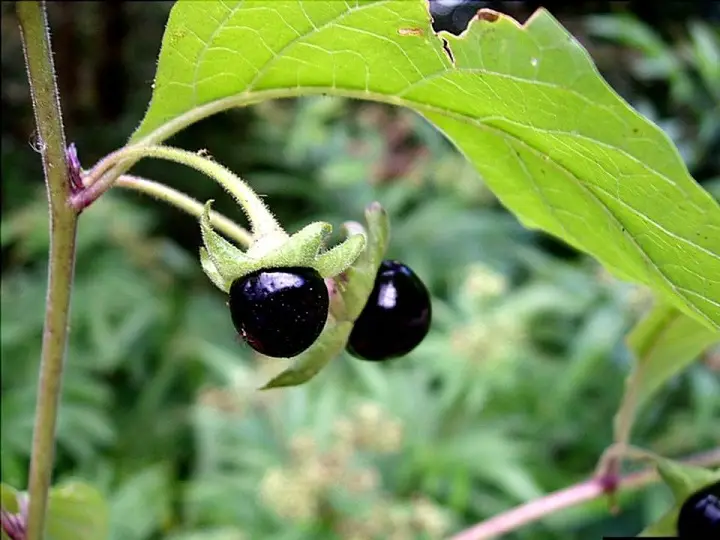
Belladonna is an upright, branched perennial that's part of the nightshade family. The plant's dark green leaves are oval, pointed, and unevenly sized, ranging from 3 to 10 inches in length. The dull, purple-hued flowers are distinctly bell-shaped and mildly fragrant. The fruit, which ripens between late August and early September, is black and shiny like a cherry.
All parts of the belladonna plant—including its leaves, flowers, fruits, and roots—are highly toxic, due to tropane alkaloids such as atropine, scopolamine, and hyoscyamine. In healthy skin, contact with any part of the plant can cause a severe allergic reaction.
Symptoms of belladonna poisoning include dilated pupils, a rapid heartbeat, blurred vision, delirium, vomiting, hallucinations, loss of balance, convulsions, and respiratory failure, and can eventually lead to death. As few as two berries for a child (and ten berries for an adult) can be lethal.
2. Poison Hemlock (Conium maculatum)
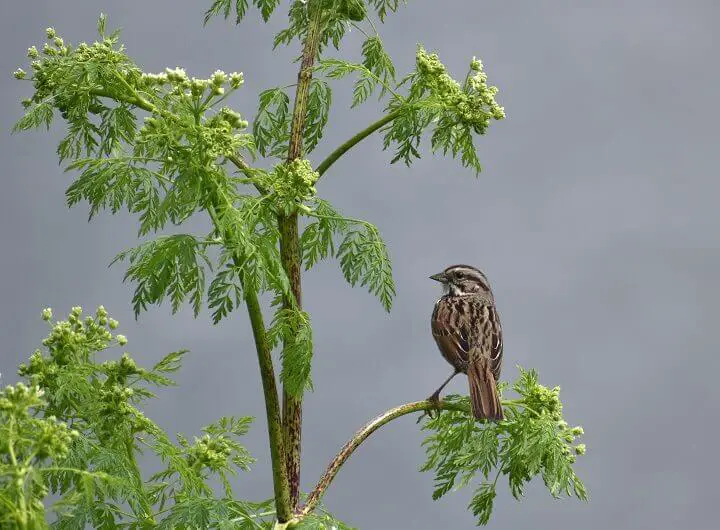
This is one of the deadliest plants found in North America. This plant typically measures three to eight feet tall and has stems that are hairless and hollow with ridges and purple spots.
Poison Hemlock plants contain highly toxic piperidine alkaloid compounds, including coniine and gamma-coniceine, which cause respiratory failure and death in mammals.
All parts of Poison Hemlock are highly poisonous to people and animals. Ingestion of even small amounts may result in death.
3. The Death Angel Mushroom (Amanita sp.)

The six species of Amanita found in North America are responsible for 95 percent of the cases of mushroom related fatalities that occur in the United States. It’s the King Cobra of mushrooms.
The Death Angel mushroom is usually 6 to 8 inches tall with the cap expanding to 5 or 6 inches in diameter. The color is whitish, sometimes tinged with brown, sometimes with a bit of gray. The color changes as the mushroom ages. Below the gills on the stout stem will be a filamentous skirt.
The poison responsible for the fatalities is a pair of peptides called amatoxins that work by inhibiting protein synthesis. Initial symptoms occur in six to eight hours after eating the mushroom and begin with severe stomach cramps, diarrhea and vomiting. These symptoms soon pass, but within 48 hours the toxins begin doing extreme damage to the liver and kidneys.

4. Aloe Vera (A. vera)
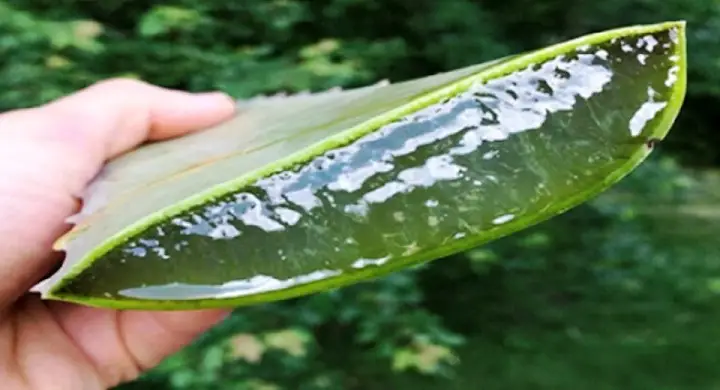
Who’d have thunk it? A plant that has been used for thousands of years by native people to treat burns and skin irritations actually has a toxic component. The gel of Aloe Vera is not poisonous but there is a thin membrane inside the leaves that contains chemicals known as Aloin and Anthraquinonec-glycoside. Both are very toxic and if ingested in large quantities can cause vomiting, nausea, cramping and diarrhea.
5. Marsh Marigold (Caltha palustris)
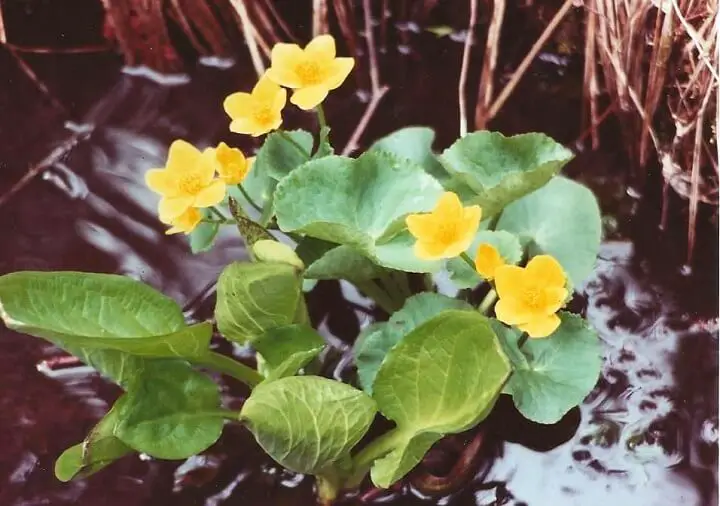
This perennial plant is about 6 inches to 2 feet tall and as its name implies prefers wet, soggy ground. In spite of its name, it is not related to marigolds but buttercups. The stems are hairless and hollow. The blades of the leaves are up to 4″ long and 4″ across. The upper stems produce small clusters of 5 to 9 bright yellow flowers. Each flower spans about ¾–1½” across; it consists of 5-9 yellow petals.
Marsh Marigold leaves are poisonous to livestock and humans due to the presence of protoanemonin, an oily toxin. The acrid foliage also contains toxic alkaloids and glycosides. Protoanemonin is released by damaged plants and can cause skin irritation.
If ingested, it can induce convulsions and lesions throughout the digestive tract. An alkaloid called Lycorine is found in the bulbs and stem and causes vomiting, diarrhea, abdominal pain, shivering and nausea.
6. Oleander (Nerium oleander)
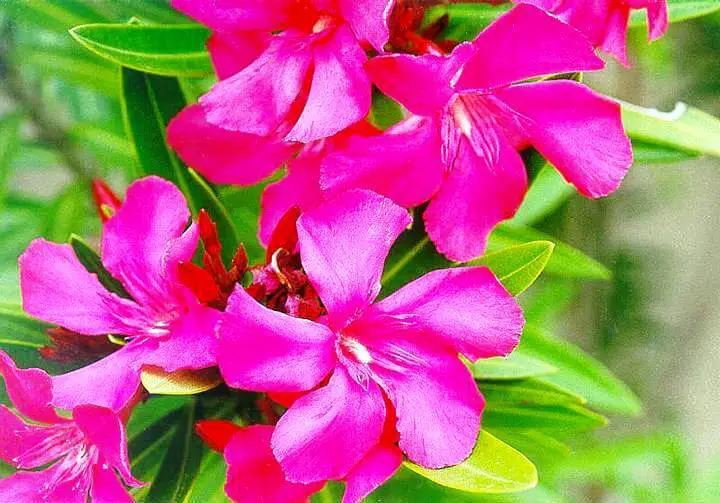
Extremely dangerous, this plant has pinkish or white flowers with 5 petals. It’s so poisonous you can’t even drink water if the Oleander has touched it. It causes the heart rate to slow down and could cause heart palpitations.

7. Lily of the Valley (Convallaria majalis)

A common plant that grows 6 to 12 inches tall and produces white, bell shaped flowers.
Lily of the Valley is poisonous to the touch and to eat. Touching them can cause itching and redness of the skin. Ingesting them results in stomach aches, cramping, vomiting, diarrhea, abdominal pain, and an irregular heartbeat.
8. Chrysanthemum (Chrysanthemum Asteraceae)

A common garden plant and flower, touching a Chrysanthemum can produce itching and a rash and in some individuals can cause blistering similar to Poison Ivy.
9. Rhubarb Leaves
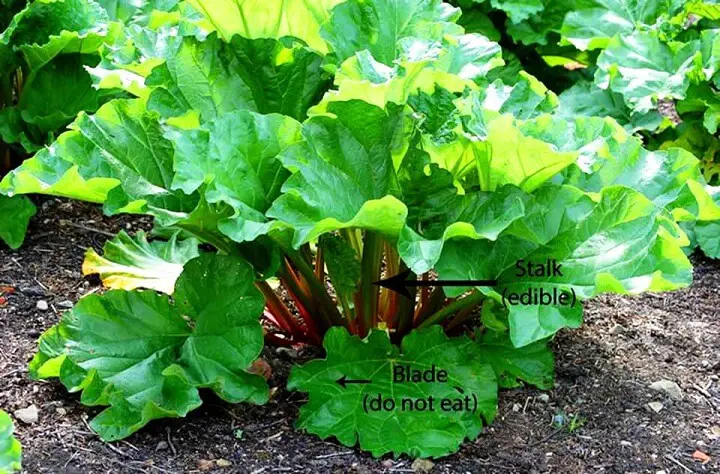
You’ll never find them at a grocery store and for good reason. Rhubarb leaves contain Oxalic acid. It’s a poisonous, colorless substance commonly used in products such as metal polishes, stain removers, bleaches, and anti-rust products.
Some of the symptoms of Oxalic Acid poisoning include, abdominal pain, collapse, convulsions, kidney problems, low blood pressure, mouth pain, shock, throat pain, tremors, vomiting, and weak pulse. Eat the stems, compost the leaves.

The most common cause of skin irritation is a chemical compound in the leaves of Poison Ivy, Oak and Sumac called urushiol oil.
10. Poison Ivy
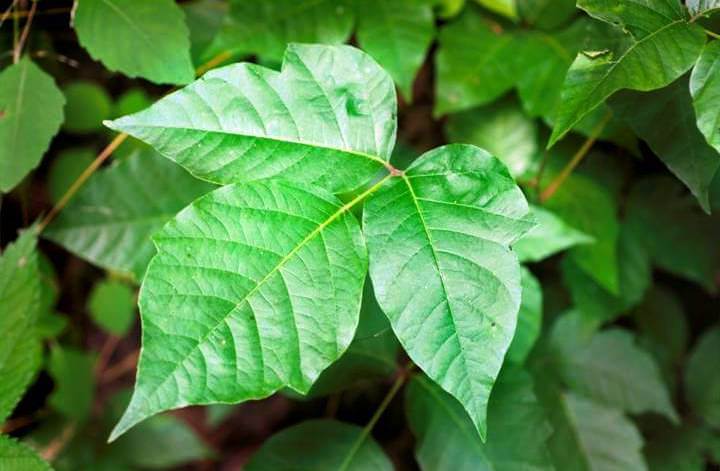
Grow as a vine or small shrub trailing along the ground or climbing on low plants, trees and poles. Each leaf has three glossy leaflets, with smooth or toothed edges. Leaves are reddish in spring, green in summer, and yellow, orange, or red in fall. May have greenish-white flowers and whitish-yellow berries.
Symptoms of contact with Poison Ivy begin with itching, a red rash on the skin followed by blisters.
11. Poison Oak
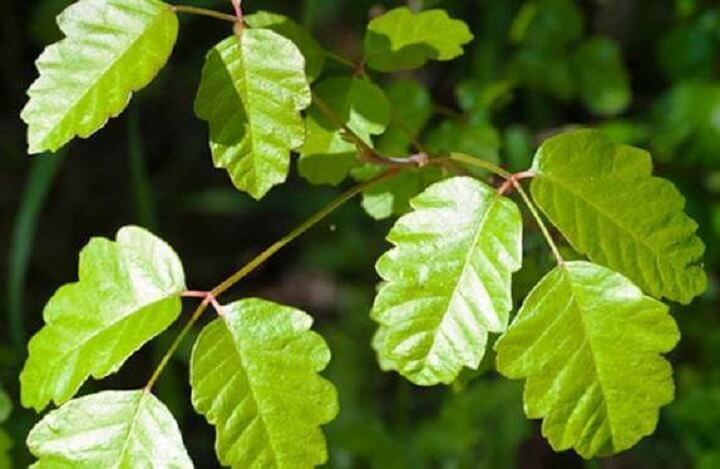
Poison Oak grows as a low shrub in the Eastern and Southern United States, and in tall clumps or long vines on the Pacific Coast. Fuzzy green leaves in clusters of three are lobed or deeply toothed with rounded tips. May have yellow-white berries.
Symptoms of contact are similar to Poison Ivy causing itching, redness and rashes on the skin and in some cases blisters.
12. Poison Sumac
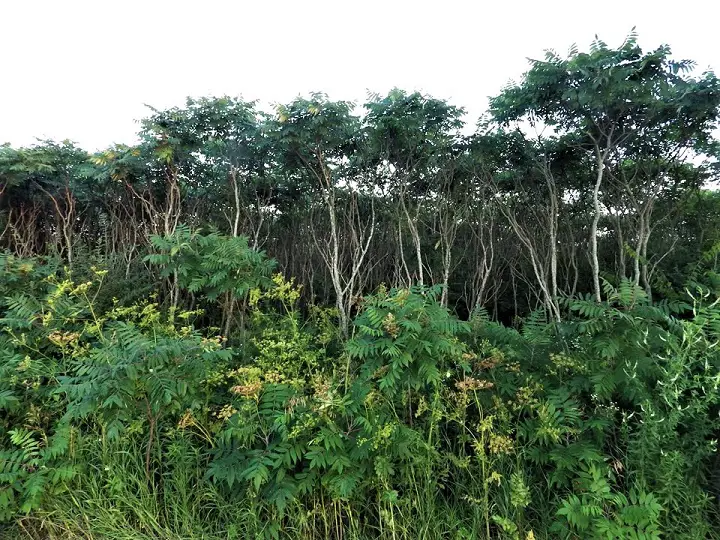
Poison Sumac grows as a tall shrub or small tree in bogs or swamps. Each leaf has clusters of seven to 13 smooth-edged leaflets. Leaves are orange in spring, green in summer, and yellow, orange, or red in fall. May have yellow-greenish flowers and whitish-green fruits hanging in loose clusters.
Symptoms of contact are similar to Poison Oak and Poison Ivy.
Treatments and First Aid

Most conditions from poisonous plants can be treated, but there are some exceptions. Certain mushrooms and even plants like Poison Hemlock have no known cure or antidote. Here are some steps to take if you believe that you or someone you know has been poisoned by a plant.
- Immediately call the National Poison Control Center — (800) 222-1222 — or your doctor.
- Have activated charcoal on hand. It’s the most commonly used treatment for poisoning.
- Ipecac syrup can be used to induce vomiting if the plant does not contain oxalate crystals found in Class 3.
- Treat rashes and skin irritation with Hydrocortisone cream or calamine after washing in cool, soapy water.
- If symptoms appear to be severe or worsen, call 911 or get to the Emergency Room.
Are There More?
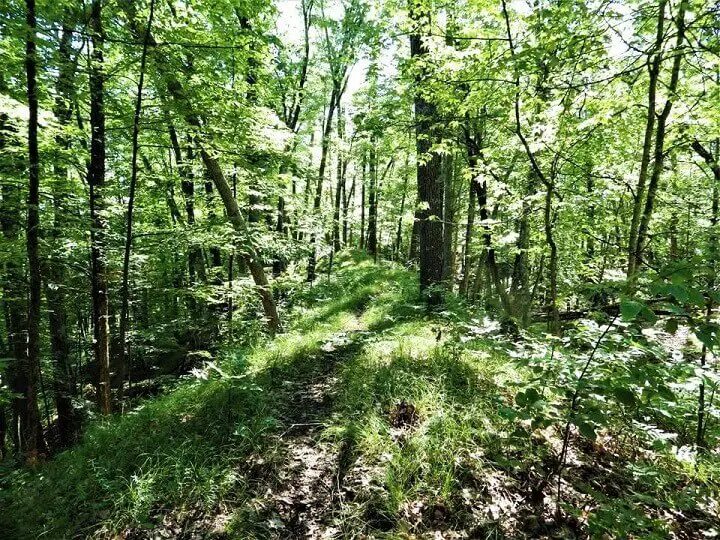
Unfortunately, yes—thousands more around the world. Books have been written about them and many web pages from the U.S. Forest Service to the USDA have dedicated sections about poisonous plants. The University of California also has a published list based on the toxicity classes we covered.
Ultimately, knowledge is power and your ability to identify a toxic or poisonous plant and avoid it is the best protection. It’s especially important if you have pets, livestock or young children. There are enough challenges in the world today without having to confront an emergency because someone decided that a pretty Belladonna berry looked like something good to eat.
Like this post? Don't Forget to Pin It On Pinterest!


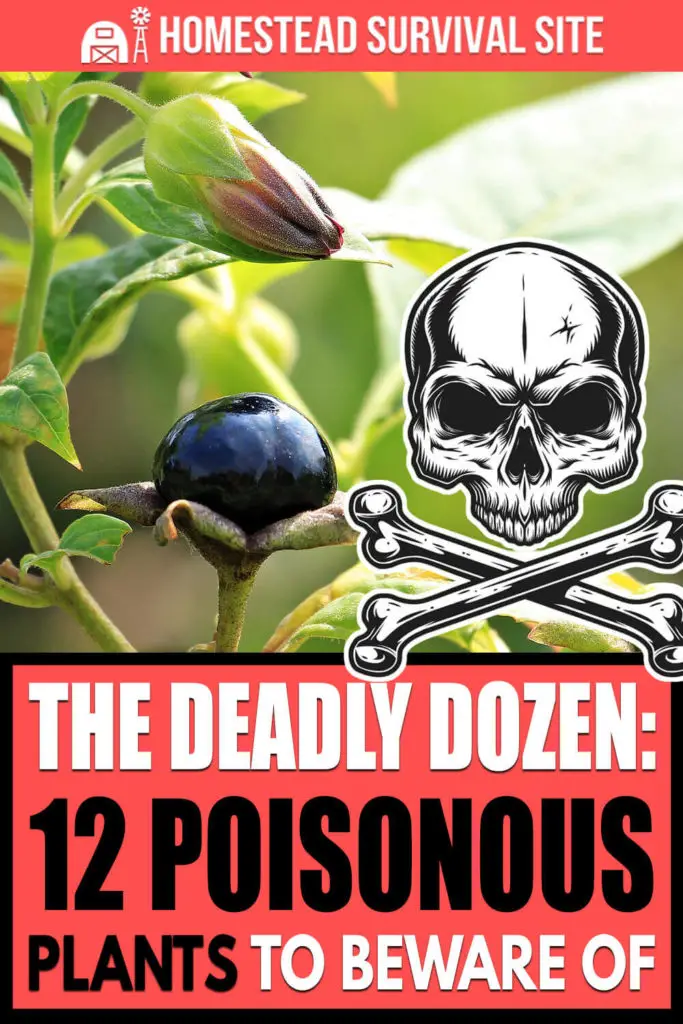








This information is absolutely INCORRECT!!! It states 100% of wild mushrooms are either “toxic or deadly.” You may gain ignorant followers but you’ve just lost a lot of people who do this for a living.
You certainly got my attention but as an expert in mycology, you’ll be out on my list of “Sites You Can’t Trust.” And my followers will listen BC they can educate themselves. Thanks for tomorrow’s class example on idiotic misinformation!
I’m not sure why Steve wrote that 96% of mushrooms are toxic and 4% are deadly. I wonder if he was thinking of something else as the false information was in the same bullet point as the one about berries, which doesn’t make sense. Anyway, thanks for pointing this out. That line has been removed.
The first plant you pictured is queen Elizibeth’s lace, NOT poisonous at all. It looks a lot like hemlock. many people get it confused. the flower will have a tiny reddish purple spot in the center ( which is where the name comes from because they say she pricked her finger while working and that spot is the blood droplet) hemlock has a very purple streaked stem, like rembrandt tulips. it looks like someone tye-died the stem. very different. And water hemlock is the single most poisoinus plant on earth.
And there is no such word in the English language called “thunk” the past form of the verb think is “would have thought”. Aloe does not cause any reactions at all. there are dozens of aloe drinks, supplements and more in health food stores. Aloe is a number one healing plant both internal and external. Brought here from Africa.Most of the time healers use it externally. through the ages people have also ingested it with no problems.
Thanks for pointing this out! The picture has been updated. And I’m pretty sure Steve knows thunk isn’t a real work. “Who’d have thunk it?” is a common colloquialism.
Just a helpful addition to the Hemlock, it’s most commonly misidentified with wild Carrot. The reddish purple dot isn’t always there to be the most obvious identifyier. The best way if you are inexperienced is to pull up the plant and smell the undeniable carrot smell to be sure.